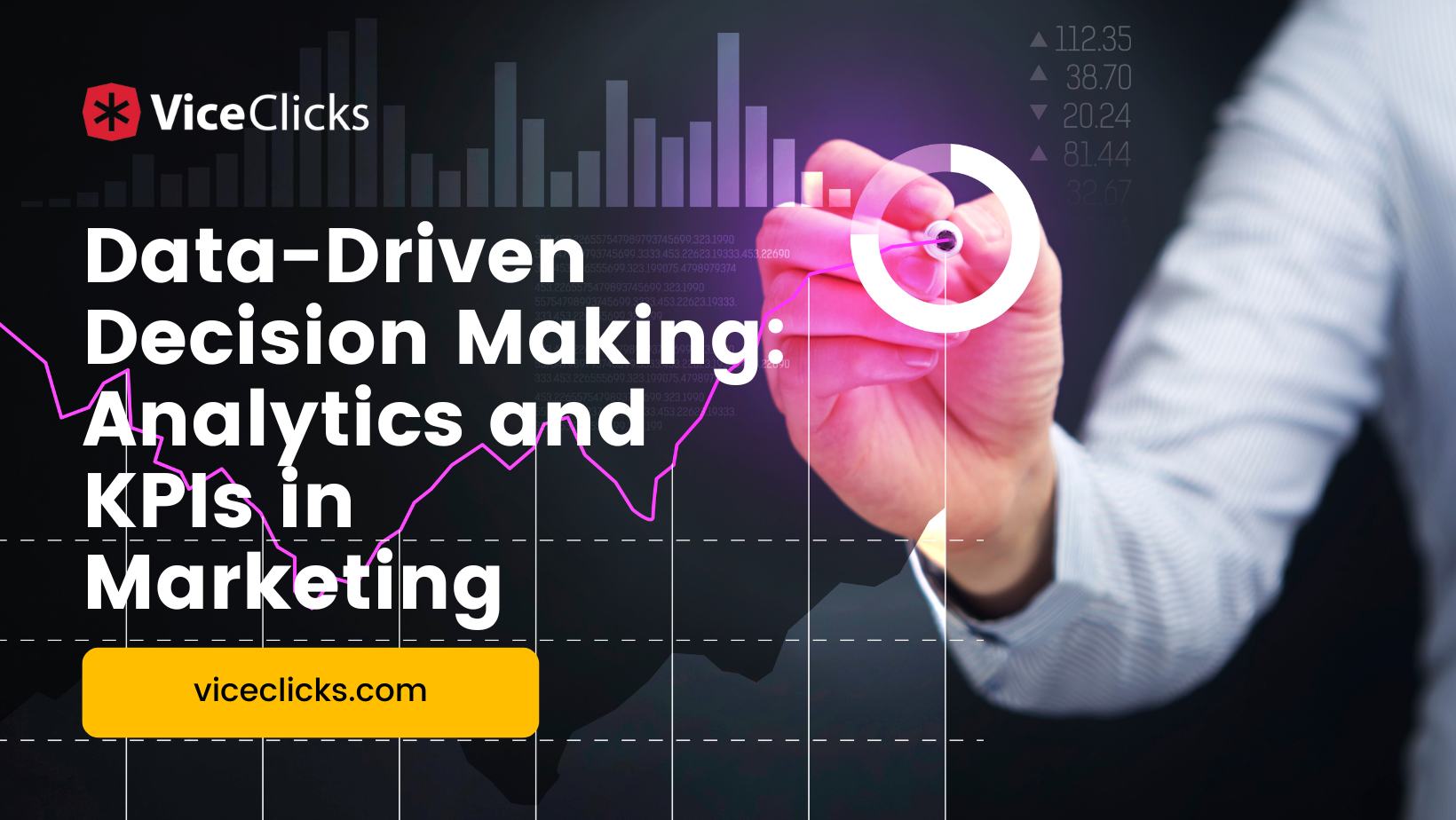Data-Driven Decision Making: Analytics and KPIs in …

In the fast-paced world of digital marketing, staying ahead of the curve requires more than just intuition and creativity. It demands a strategic, data-driven approach. This article is a comprehensive guide to understanding, implementing, and leveraging analytics and Key Performance Indicators (KPIs) in digital marketing. We’ll explore how data can transform your marketing efforts, optimize campaigns, and drive business success.
The Power of Digital Marketing Analytics
1. Defining Digital Marketing Analytics
Digital marketing analytics involves the collection, measurement, analysis, and interpretation of data related to digital marketing activities. This encompasses a wide range of metrics, providing insights into the performance of various online channels and campaigns.
2. Unlocking Consumer Insights
One of the most significant advantages of digital marketing analytics is its capacity to unearth valuable consumer insights. By tracking user behavior, preferences, and interactions, businesses can gain a deeper understanding of their target audience. This knowledge serves as the bedrock for personalized and effective marketing strategies.
3. Real-Time Optimization
Digital marketing analytics enables real-time monitoring of campaign performance. This means that if a particular marketing channel or campaign isn’t delivering the desired results, adjustments can be made promptly. It allows for agility and adaptability in marketing strategies, ensuring resources are allocated where they generate the most impact.
Key Performance Indicators (KPIs) in Digital Marketing
1. Decoding Key Performance Indicators
KPIs are specific, measurable metrics that gauge the performance of digital marketing activities. They serve as benchmarks for evaluating the effectiveness of campaigns and strategies. The choice of KPIs depends on the goals and objectives of the marketing campaign.
2. Common Digital Marketing KPIs
Conversion Rate: The percentage of visitors who complete a desired action, such as making a purchase, signing up for a newsletter, or filling out a contact form.
Click-Through Rate (CTR): The ratio of users who click on an ad to the number of times the ad was shown. It’s a critical metric for assessing the effectiveness of online advertising.
Cost Per Click (CPC): The amount spent for each click generated from paid advertising efforts. It helps in optimizing ad spend.
Customer Acquisition Cost (CAC): The cost incurred to acquire a new customer. It’s calculated by dividing the total marketing expenses by the number of new customers acquired.
Return on Investment (ROI): Measures the profitability of a marketing campaign or initiative. It compares the net profit generated from the campaign to the costs incurred.
Customer Lifetime Value (CLV): Estimates the total revenue a business can expect from a customer over the entire relationship. It’s crucial for determining how much to invest in acquiring and retaining customers.
Bounce Rate: The percentage of users who visit a website and leave without interacting further. A high bounce rate may indicate issues with website content or user experience.
Social Media Engagement: Metrics like likes, comments, shares, and followers on social media platforms indicate the level of audience engagement with your brand.
Implementing Data-Driven Strategies
1. Integration of Marketing Technologies
Leverage marketing technology tools and platforms to facilitate data-driven decision-making. Customer Relationship Management (CRM) systems, marketing automation software, and analytics platforms provide the infrastructure for collecting and analyzing data.
2. Cross-Channel Data Integration
In today’s multi-channel marketing landscape, it’s imperative to integrate data from various sources. This includes website analytics, social media platforms, email marketing software, and more. A unified view of data enables a holistic understanding of customer interactions across different touchpoints.
3. Segmentation and Personalization
Effective use of data allows for audience segmentation based on various criteria such as demographics, behavior, and preferences. This, in turn, facilitates the delivery of personalized content and offers, which significantly boosts engagement and conversion rates.
Overcoming Challenges in Data-Driven Marketing
1. Data Quality and Accuracy
Ensuring the accuracy and reliability of data is a persistent challenge. Implementing data validation processes and regularly auditing data sources can help maintain data integrity.
2. Privacy and Compliance
With the advent of strict data protection regulations like GDPR and CCPA, businesses must navigate the balance between data-driven marketing and consumer privacy. Compliance with these regulations is non-negotiable.
3. Interpreting Complex Data Sets
As data sets grow in complexity, so does the challenge of interpreting them. Data visualization tools and advanced analytics platforms can assist in extracting actionable insights from large volumes of data.
Conclusion: Embracing the Data-Driven Future of Digital Marketing
In the digital landscape, data is the linchpin of success. Embracing analytics and KPIs empowers businesses to make informed, strategic decisions that drive results. By leveraging consumer insights, optimizing campaigns, and staying agile, businesses can not only survive but thrive in the competitive digital marketing arena. The future belongs to those who understand that the real magic happens when creativity meets data-driven strategy. Embrace the power of data, and watch your digital marketing efforts soar to new heights.
